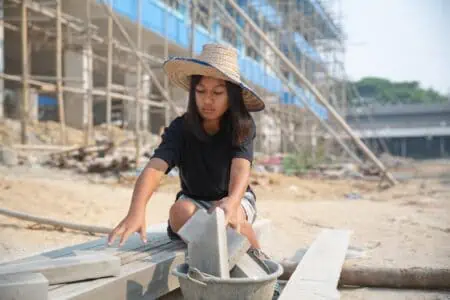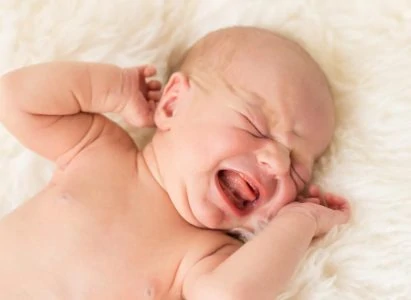Right now, 160 million children are trapped in child labor across the globe. While we often think of this as an issue solely in developing nations, it is a crisis that touches high-income countries too, including the United States.
To shed light on this reality, I have compiled essential child labor statistics and facts. This guide breaks down the data by country, explores the root causes like poverty, and examines the heartbreaking figures behind child trafficking.
However, the situation is not hopeless. No matter where we live, we can take steps to fight back. I will wrap up this post with actionable ways you can help put an end to child labor.
Key Takeaways About Child Labor
- Global crisis: Roughly 160 million children worldwide are victims of child labor, which accounts for one in 10 kids.
- Regional hotspots: Sub-Saharan Africa has the highest prevalence of child labor, though cases are rising in the US.
- Primary drivers: Poverty remains the leading risk factor, forcing families to rely on their children’s income to survive.
- Trafficking connection: About 27 percent of human trafficking victims are children, often exploited for labor or sex work.
Does Child Labor Still Exist Today?
Sadly, child labor is still very prevalent in our modern world. According to UNICEF and ILO data, roughly one in 10 children are subject to child labor. This amounts to a staggering 160 million children (1).
These children are often forced into dangerous or exploitative activities.
- Sectors involved: The majority work in agriculture, but many are trapped in trafficking, armed forces recruitment, drug production, and commercial sexual exploitation (2).
- Economic status: While most child labor occurs in low-income countries, it is also a major issue in middle-income nations. In fact, more than half of all child laborers live in middle-income countries like Egypt, Indonesia, and Brazil.
- High-income nations: It also happens in wealthy nations. In the United States, the Department of Labor currently has over 600 child labor investigations underway (3).
30 Child Labor Statistics and Facts
To help you understand the scale of this issue, I have organized the most vital statistics and facts into categories.
Child Labor Statistics by Country
Let’s examine the current state of the child labor crisis across different regions.
- Identifying the worst offenders: Pinpointing countries with the “most” child labor is difficult because reliable data is often outdated or unreported. However, historical data from 2016 highlighted Guinea-Bissau as having one of the highest rates (4). At that time, 67.5 percent of children between ages seven and 14 were working.
- Myanmar’s crisis: Myanmar has also struggled significantly with this issue. Studies found approximately 1.1 million children between ages five and 17 were subjected to labor in the region (5).
- Africa leads in total cases: As a region, Africa has the most cases of child labor globally (6). About 20 percent of children there are involved in labor, which is roughly twice as high as other regions. The vast majority of this work happens on family farms.
- Rising cases in the UK: The United Kingdom is not immune. A 2022 study predicted 5,468 child labor victims for the year ending December 2021 (7). This represented a nine percent increase year-over-year. Boys made up 79 percent of these victims, largely due to criminal exploitation.
- Violations in the USA: In the US, the Department of Labor reported a 69 percent increase in children being employed illegally (8). Investigators found 3,800 children working illegally across 835 companies, including major supply chains for brands like Hyundai and Tyson Foods.
- Excessive working hours: While some studies define child labor as anything over one hour per week, many kids work essentially full-time jobs. In Laos, the average work week for children is 34.4 hours. In Kenya, it is 32.7 hours, and in Bangladesh, it is 32 hours.
- Impact on education: The more hours a child works, the less likely they are to attend school. In Pakistan, where children work an average of 24.9 hours a week, nearly 87.5 percent do not attend school. Conversely, in Ukraine, where the average is three hours of work, only 1.3 percent miss school.
- South Asia numbers: South Asia is home to an estimated 16.7 million child labor victims (9). India alone accounts for 5.8 million of these children.
- The “Invisible” children: In South Asia, there are 28 million children (mostly girls) reported as neither working nor attending school. While they are not officially counted in labor statistics, they are likely performing unpaid domestic labor that deprives them of a childhood.
Root Causes and Risk Factors
Now that we have looked at the global spread, let’s analyze why this keeps happening.
- Poverty is the main driver: The leading cause of child labor is simple poverty (10). When parents cannot pay bills, they are often forced to send their children to work. Recruiters may promise education and good pay, but the reality is usually low wages and dangerous conditions.
- The COVID-19 effect: The pandemic reversed years of progress. School closures and economic instability pushed millions more children into the workforce. By the end of 2022, nine million additional children were at risk solely due to pandemic-related factors (11).
- Gender disparity: Boys are statistically more vulnerable to child labor than girls. Worldwide, 11.2 percent of boys are victims compared to 7.8 percent of girls. However, girls are more likely to be involved in “hidden” domestic labor.
- Rural vs Urban: Geography matters. There are 112.7 million more children working in rural areas compared to urban centers. In fact, rural children are three times more likely to be victims of child labor.
- Family-based labor: Surprisingly, 72 percent of all child labor for kids aged five to 11 happens within their own families. This usually involves hazardous work on family farms or businesses.
- Caregiver health: Children whose parents or primary caregivers suffer from chronic illness or sudden health shocks are at a much higher risk of being pulled out of school to work.
- Migration and displacement: Refugee and migrant children (those displaced by war or disaster) are extremely vulnerable (12). Without legal status or family protection, they are easy targets for traffickers.
- Complex web of factors: Other contributors include family debt bondage, lack of access to quality education, cultural norms, weak enforcement of laws, and the global demand for cheap goods (13).
Child Trafficking and Labor Statistics
It is important to distinguish between labor and trafficking. While child labor hinders development, trafficking involves recruiting and transporting children for exploitation.
- A domestic issue: Child trafficking is not just an international problem; it occurs in all 50 US states.
- Victim demographics: Children make up 27 percent of all human trafficking victims globally (14). This amounts to roughly four million children worldwide.
- Forced labor prevalence: Most trafficked children are forced into domestic service, factory work, or agriculture rather than the sex trade, though both are horrific violations of human rights.
- Girls are targeted: 66 percent of child trafficking victims are girls. They are frequently forced out of education, which traps them in a cycle of poverty and exploitation.
- Sexual exploitation: When it comes to trafficking for sexual exploitation, 99 percent of the victims are women and girls.
- Betrayal by trust: In a shocking number of cases, victims know their trafficker (15). The perpetrator is often a family friend, relative, or even a romantic partner.
- Racial disparities: Children from culturally and linguistically diverse communities are significantly more likely to be trafficked into sexual exploitation compared to white children (16).
How to End Child Labor
There is no single magic bullet, but specific legal and social interventions have proven effective.
- Education is the key: Access to free, quality schooling is the most effective way to end child labor. It keeps children out of the workforce and gives them the skills to earn higher wages as adults. For instance, in China, adding just one extra semester of school reduced child labor rates by eight percent (17).
- Social protection: Supporting a parent’s income is crucial. When families have access to cash transfers or food assistance, they are far less likely to send their children to work.
- Enforcing laws: While the US has issues, strict enforcement of labor laws makes a massive difference. If every country actively enforced existing bans on child labor, cases would drop drastically.
- Community advocates: Empowering communities helps. When local leaders and advocates are trained to detect and report child labor, they can intervene before a child is exploited.
- Awareness: You can help by educating yourself. Learn the signs of labor trafficking and know the local hotlines to report suspicious activity in your area.
- Conscious consumerism: Many major brands have child labor hidden deep in their supply chains. Research the brands you buy from and look for certifications like Fair Trade or GoodWeave that audit for child labor.
- Decent work for adults: When the adult labor market improves, child labor decreases. If parents can earn a living wage with decent working conditions, they can afford to keep their children in school.
FAQs
Final Thoughts on Child Labor Stats
It is shocking that child labor remains such a massive problem in both low-income and high-income countries. While the statistics from Sub-Saharan Africa and South Asia are daunting, the presence of child labor right here in the United States serves as a wake-up call for everyone.
However, we are not helpless. You can make a difference by educating your community, making conscious shopping choices, and supporting organizations on the front lines. Groups like Global March, The Child Labor Coalition, GoodWeave, and Not For Sale are doing incredible work and are worth your support.






